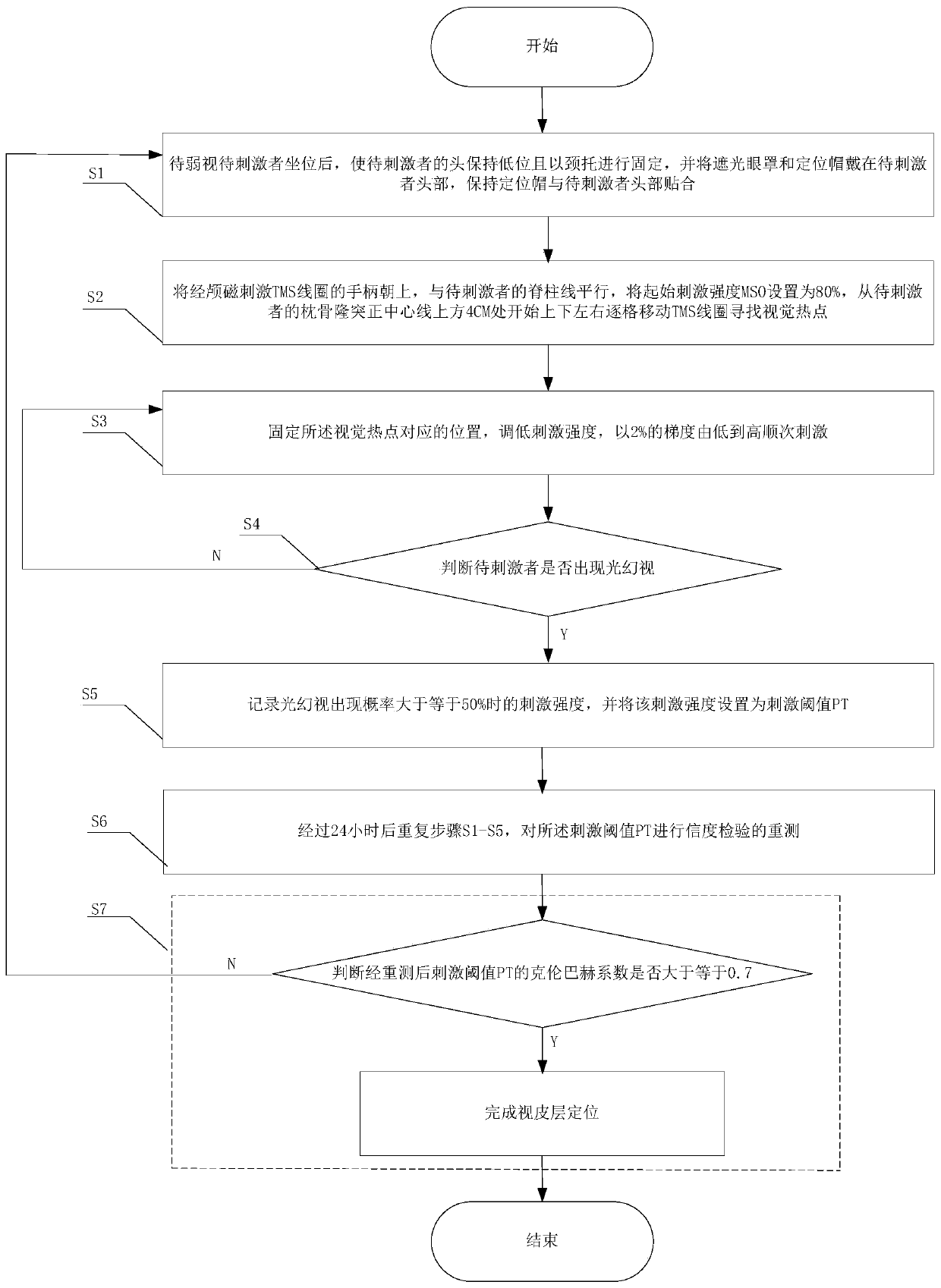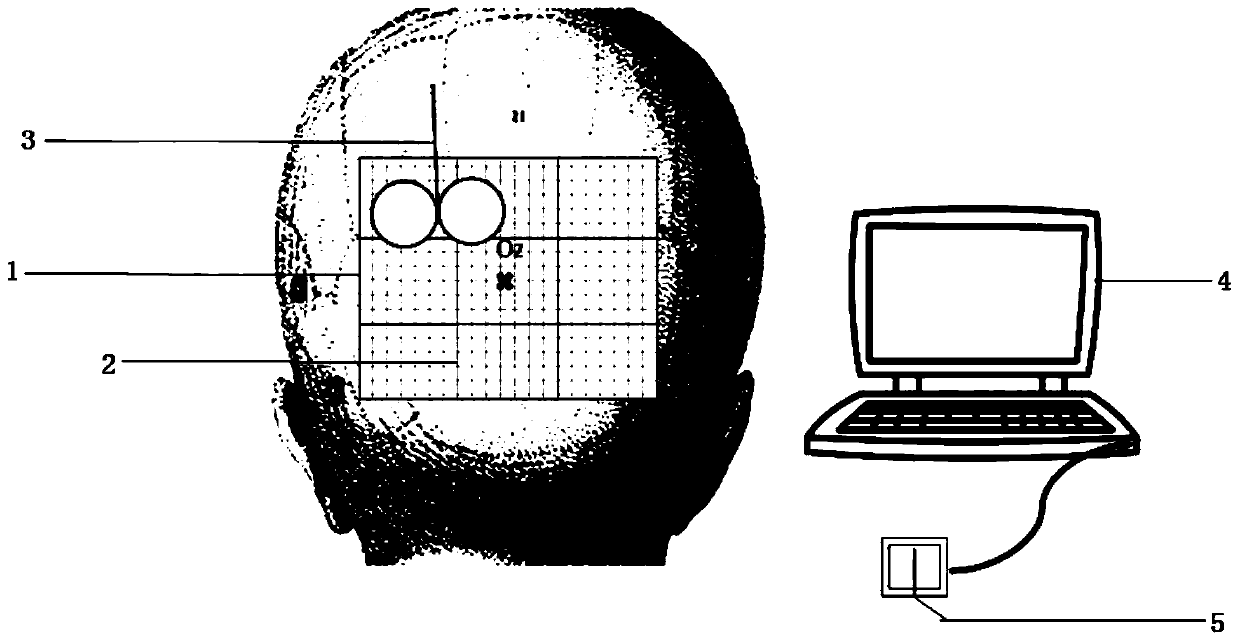Visual cortex positioning method and device with transcranial magnetic stimulation
A technology of transcranial magnetic stimulation and positioning method, applied in the field of medical assistance, can solve problems such as difficult positioning, and achieve the effect of ensuring accuracy, increasing accuracy and reducing possibility
- Summary
- Abstract
- Description
- Claims
- Application Information
AI Technical Summary
Problems solved by technology
Method used
Image
Examples
Embodiment
[0036] Transcranial Magnetic Stimulation (TMS) is a technology that generates current in the local cerebral cortex through a pulsed magnetic field to temporarily activate or inhibit the cortex. The effect of transcranial magnetic stimulation (TMS) is affected by many factors, including stimulating brain area, coil type, pulse waveform, current direction, stimulation intensity, stimulation frequency, and number of stimulation pulses. Among them, the stimulation intensity is the most important. Taking the visual cortex as an example, high-intensity TMS acting on the occipital lobe can produce phosphenes, while low-intensity stimulation can produce transient blind spots. In the case of ensuring that the above parameters are consistent, individual differences in cortical excitability, cerebral cortex configuration, and skull shape (affecting the distance from the scalp to the cerebral cortex) will significantly affect the ability to induce the same excitability. The intensity of ...
PUM
 Login to View More
Login to View More Abstract
Description
Claims
Application Information
 Login to View More
Login to View More - R&D
- Intellectual Property
- Life Sciences
- Materials
- Tech Scout
- Unparalleled Data Quality
- Higher Quality Content
- 60% Fewer Hallucinations
Browse by: Latest US Patents, China's latest patents, Technical Efficacy Thesaurus, Application Domain, Technology Topic, Popular Technical Reports.
© 2025 PatSnap. All rights reserved.Legal|Privacy policy|Modern Slavery Act Transparency Statement|Sitemap|About US| Contact US: help@patsnap.com



